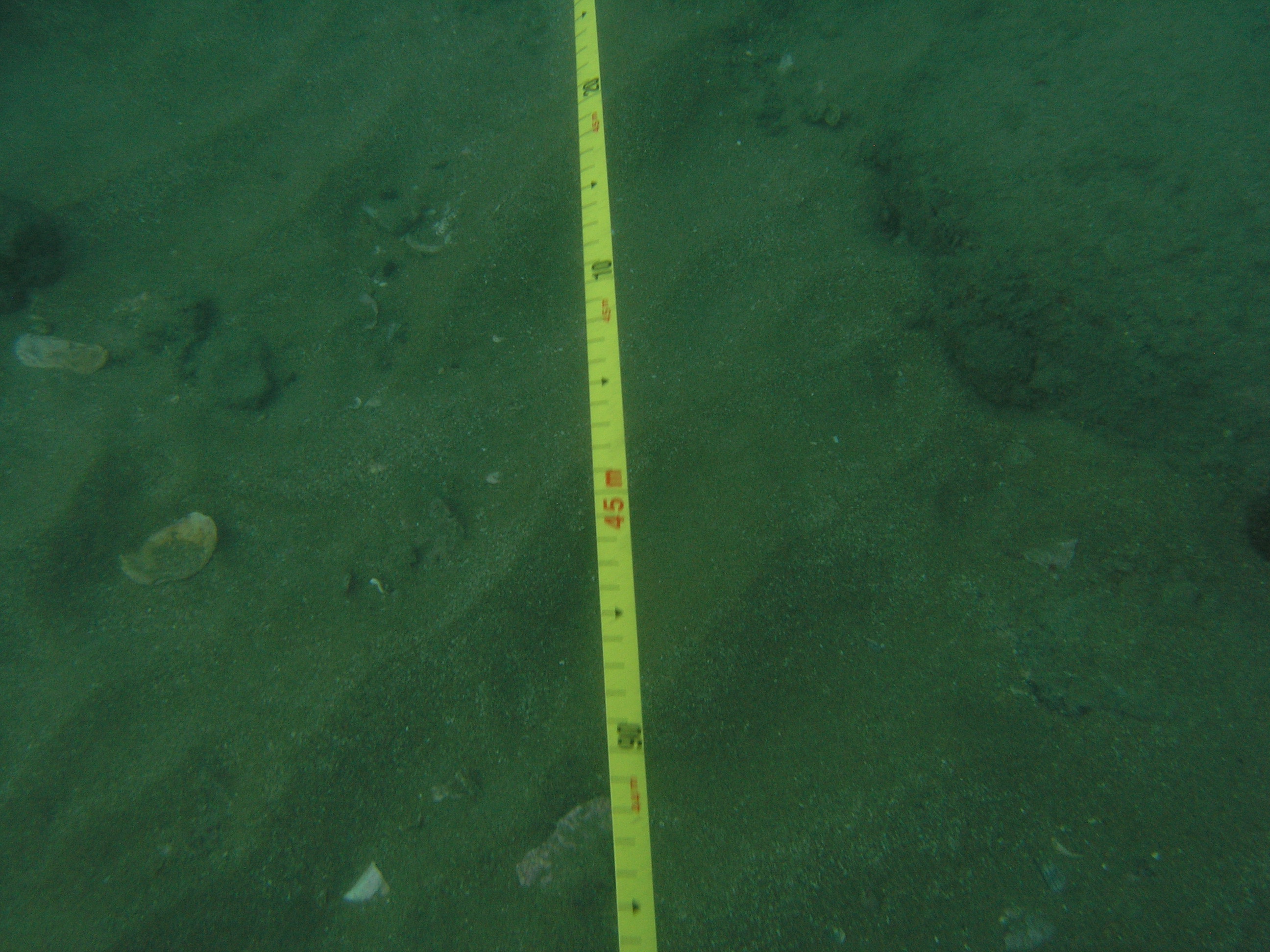|
|
Subtidal low energy over mudShort descriptionSubtidal low energy muddy ecosystems (including also muddy sand and/or gravelly mud) with or without burrowing infauna and low density epifauna. Disclaimer: Ecosystem type descriptions are based on biophysical attributes identified in Central Queensland through expert advice and supported by scientific literature. Not all ecosystem types are mapped based on current inventory, and many of the ecosystems described here may also occur in other parts of Queensland.
Classification categoriesSelect from the links below to view related ecosystem type categories Long descriptionSubtidal low to very low energy muddy ecosystems including subtidal mudbanks, muddy shoals, channels, swales and muddy planes (including also muddy sand, sand and/or gravelly mud), with or without burrowing infauna, sparse epifauna and algae (e.g. macrophytes, calcareous, filamentous etc.). When inhabited by biota, these ecosystems can vary enormously in density and species diversity. Muddy ecosystems with infauna and epifauna may warrant subdivision into different sub-types based on other attributes such as Infauna utilisation, specific combinations of Structural macrobiota etc. Low energy muddy subtidal ecosystems occur in rivers, creeks and estuaries as well as on the continental shelf (e.g. Great Barrier Reef lagoon). Burrowing infauna are prevalent in subtidal low energy mud ecosystems where the mud retains sufficient structure to permit burrowing (Infauna utilisation). Fauna may include burrowing crabs, bivalve molluscs, polychaetes (e.g. tubeworms) and other worms (e.g. other annelids, sipunculids, phoronids etc.), ascidians and anthozoans (e.g. anemones). Epifauna is usually very sparse but may have a high species diversity including sponges, emergent infauna, including tubeworms and anemone species (e.g. Cerianthus) and flora may include seagrass species at low densities. Biota characteristic of reefal gardens (98) may also be present at very low densities, i.e. octocorallians such as sea whips, sea pens and alcyonarian soft corals (e.g. Dendronepthya). Where epifauna becomes dense, these ecosystems may grade into reefal gardens dominated by octocorallians (98). Flora may include erect macrophytes and low density seagrasses. These areas are also likely to contain unmapped areas of seagrass which are potential habitat for dugong and green turtles. Catfish and eels (e.g. Tandanus tandanus and Anguilla reinhardti) may be found in the upstream reaches of muddier estuaries with greater Freshwater influence. Other fish migrating between freshwaters and estuarine waters include Australian bass (Macquaria novomaculeata) and freshwater mullet (Myxus petardi). Special valuesHighly productive and varied ecosystems with high biodiversity value especially when there is a high density and species diversity of infauna and epifauna. Recreationally significant fish include include mullet and flathead and crustaceans include Moreton Bay bugs Thenus orientalis, saucer scallop Amusium japonicum balloti and mud scallop Amusium pleuronectes. Prawns Diagnostic attributes:Inundation ‘Subtidal’ Energy magnitude (wave) ‘Low’, ‘Very low’ Sediment texture ’Mud’, ‘gravelly Mud’, ‘muddy Sand’, ‘(slightly gravelly) sandy Mud’, ‘(slightly gravelly) Mud’, ‘sandy Mud’. Note that muddy sand functions in a similar way to mud, in the way that the sand grains slip over each other (dbSEABED – Chris Jenkins pers. comm.). QualifiersIncludes modified ecosystems that have modified Benthic depth and Terrain morphology including dredged channels, boat harbours, depressions near boat ramps etc. DistributionRepresents the presence only of muds, and is not indicative of the presence of infauna or epifauna. CommentsMore work is needed to characterise muddy habitats with biota. Consider additional attributes such as Infauna utilisation, Structural macrobiota and qualifiers of cover etc. as the density and type of burrows may be indicative of the density and diversity of biota. Last updated: 15 May 2019 This page should be cited as: Department of Environment, Science and Innovation, Queensland (2019) Subtidal low energy over mud, WetlandInfo website, accessed 8 May 2025. Available at: https://wetlandinfo.des.qld.gov.au/wetlands/ecology/aquatic-ecosystems-natural/estuarine-marine/descriptions/103/ |

 — Department of the Environment, Tourism, Science and Innovation
— Department of the Environment, Tourism, Science and Innovation


